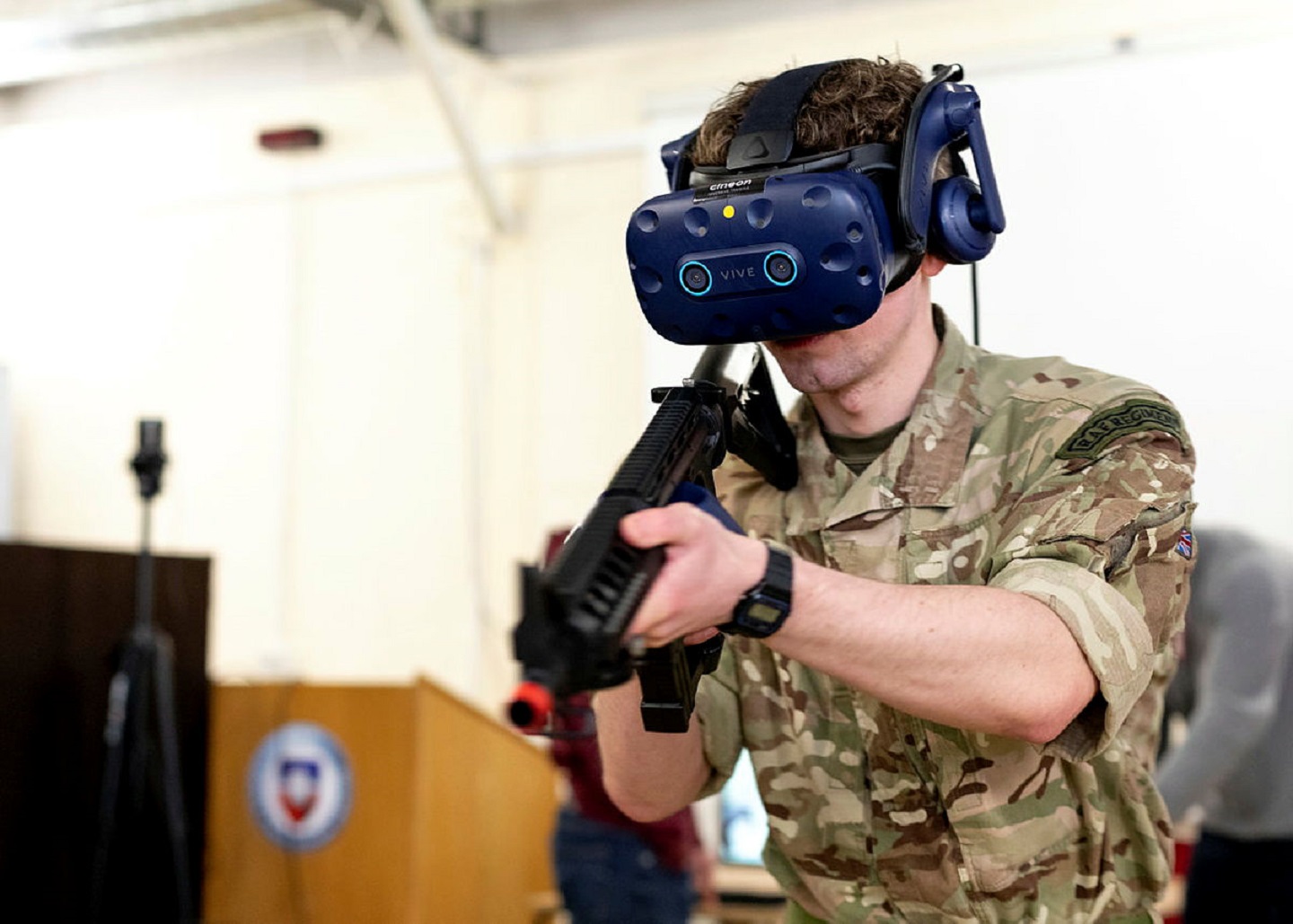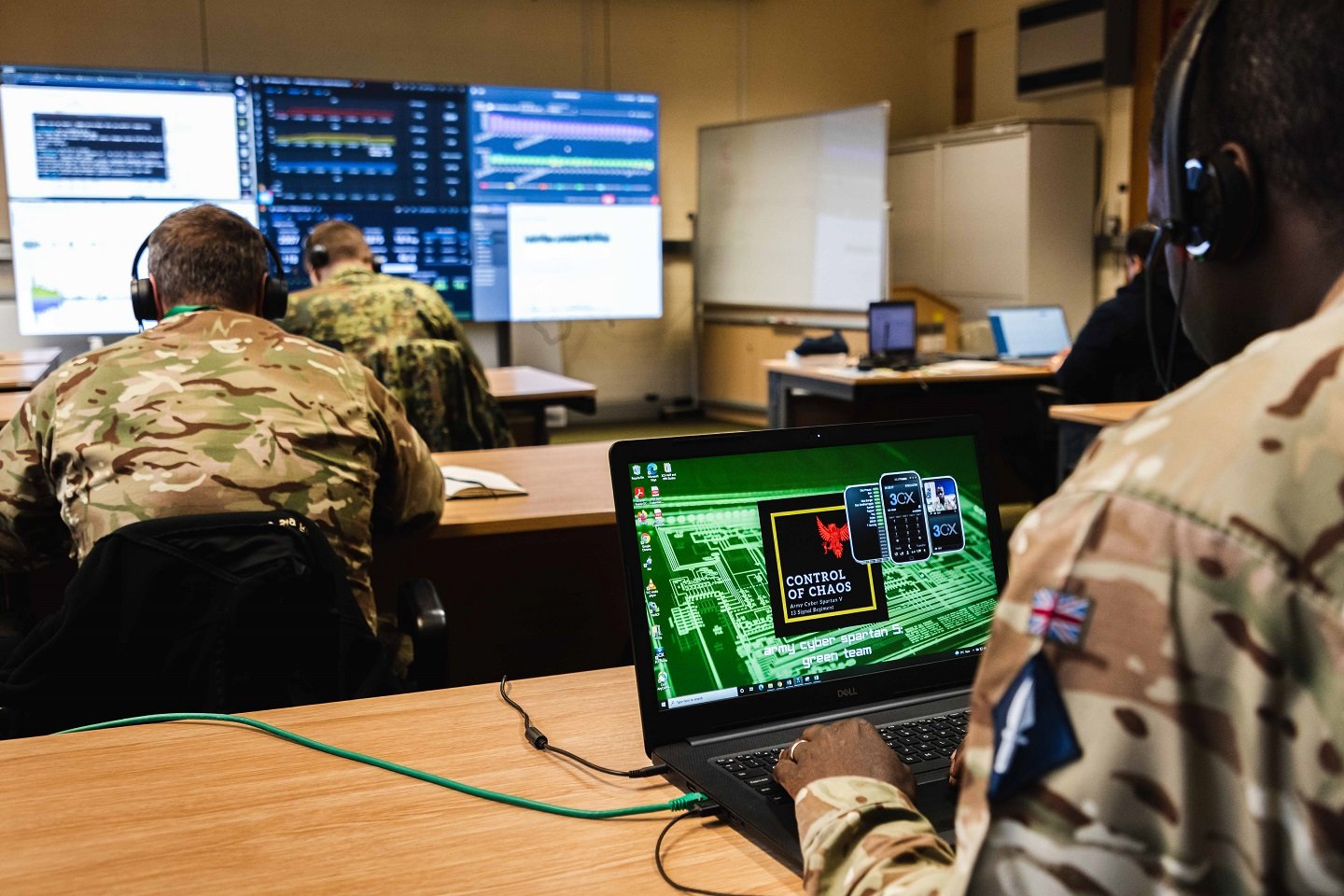Feature
Embracing the cloud: the gateway to innovative technologies
The UK is adopting cloud architecture to build and scale its military simulation environments; the stage is set to integrate Web 3.0 technologies for more deeply enhanced training experiences. John Hill reports.

Cloud computing concept in the palm of a hand. Credit: Shutterstock
The UK’s military training has become an early adopter of the cloud. As opposed to the traditional method of containing training resources in data siloes accessible only to the primary user, the cloud offers an open storage space for these resources as the technology changes the way militaries operate as a shared infrastructure that encompasses many resources, with many users, in any place, all at the same time.
According to GlobalData forecasts the global cloud services market will reach $768bn in 2026, increasing at a compound annual growth rate of 17.7% between 2021 and 2026. The cloud’s interoperability, scalability and flexibility are the main reasons for the growth and interest in the nascent industry. But the cloud also plays an even greater role in military training that has hitherto been untapped.
“Cloud is not an end state per se - it’s the gateway to exploiting cutting edge architecture and technologies that will transform the future of Defence,” the UK Ministry of Defence (MoD) assert in its Cloud Strategic Roadmap, published on 2 February 2023.
The cloud is a gateway for militaries to adopt emerging technologies such as artificial intelligence (AI), machine learning (ML), augmented reality (AR), virtual reality (VR) and robotics. While these emerging technologies fulfil certain roles in a training system – AI would interpret data for example – the cloud underpins it all, bringing it altogether to work seamlessly for users at an almost unlimited capacity.
You are not using the computational resource at its maximum requirement all the time, you are kind of expanding and contracting to meet users’ needs
Nick Brown, Hadean
This is why the MoD is keen to adopt the cloud as a way of integrating these cloud-enabled technologies to better operate its IT estate. In the Roadmap, the MoD identified that it was “not yet exploiting emerging technologies at pace and scale. We have too often traded-out technology refresh and have not driven sufficient integration and commonality”.
A hyperscale platform like the cloud will rectify this problem, enabling the UK’s military services to share resources and integrate emerging technologies giving them a competitive military advantage.
Military wargaming
The British Army has similarly identified what the cloud has to offer its land-based training culture. Since September 2022 the military has partnered with Hadean, a company that creates, curates, and delivers connected immersive experiences.
The company’s Pathfinder agreement marks Hadean’s first direct commitment to military end-users. The deep-tech company will power the British Army’s collective training transformation programme (CTTP) by applying wargaming tools and emerging technologies to offer a multi-domain cloud platform that simulates real-world and land-based training scenarios.
Speaking with Global Defence Technology, the head of defence at Hadean, Nick Brown, said that “technology has moved to things that are cloud compatible by default, rather than by exception”. The online wargaming industry acts as the driver for militaries to realise the capabilities of the gaming community’s commercial off the shelf technologies, which they integrate in their entertainment systems.
But live, immersive experiences provided by technologies like AI and VR require a real-world architecture such as the cloud. Integrating cloud-enabled technologies in this way will allow end-users to incorporate the same enhanced benefits that these technologies have given to civilian users. “The cloud would therefore allow militaries to migrate those capabilities across from civilian or commercial use cases into defence use cases in a far easier, quicker, more agile and efficient way,” Brown added.

Research in the delivery of judgemental training and the validity of using virtual reality for improving judgemental skills. Credit: UK Ministry of Defence.
It is at this level that the cloud makes data interoperable. Militaries can take data from a training exercise and then use it for wargaming or experimentation, ensuring the operator does not then have to then run that battle group exercise for a different purpose. Instead, they can just reuse the data to generate the outputs that they want for a different field.
But the possibilities of cloud-enabled immersive and sharable training do not end there. With all these different parts connected and accessible through the cloud, this complex computational system becomes a military industrial metaverse. “Whether it comes to be called a military metaverse, the technology underpinning it will be the constant,” Brown observed. “The cloud will evolve and develop to meet those needs and so that is why Hadean have a solutions-focus rather than a product-focus.”
Military-Industrial relationship
Hadean’s solutions-focus is what makes commercial industries like the gaming sector the driving force in producing the technological capabilities militaries need for a competitive edge in modern warfare. Underpinning all devices, the cloud offers numerous solutions to military inefficiency with its interoperable, scalable and flexible services.
However, the UK seeks to incorporate cloud skills into its workforce so that they can properly maintain the cloud services that industries supply. For this reason, an MoD official told Global Defence Technology that “our industry partners will continue to work collaboratively and employ a mix of civil servants and contracted resources in order to deliver the best capabilities to support the defence of the UK”.
Digital transformation is easier said than done. Particularly in the MoD’s case, digital upskilling has been an enduring failure for them for some time. The problem of developing a digital skill base has been picked up recently by the Public Accounts Committee (PAC) in its Defence Digital Strategy report, published on 3 February. The committee found that the “skills it needs are wide-ranging and include data analysis, cyber advisory, artificial intelligence, service manager and project delivery skills”, cloud-native workers being another key addition to the list.
In the meantime, while the MoD wages its skills campaign, it should seek to reuse the commercial industry’s emerging technologies and concepts. They can do this now that they are using an open architecture like the cloud, “so defence do not have to die at bespoke each time they iterate,” Brown stated.
The MoD is creating a framework within which the rapid evolution of this type of technology can find its way back into the system, “rather than defence procurement slowing things down to a degree that by the time something comes in service, it's already obsolete, which is something [defence services] are still going to have to tackle”.
Expand and contract
Hadean is already making headway with its cloud architecture, with its platform able to expand and contract to meet the needs of military training in that moment of time. This is what makes Hadean’s cloud platform flexibly scalable. “So, you are not using the computational resource at its maximum requirement all the time, you are kind of expanding and contracting to meet users’ needs,” Brown remarked.
This provides the British military with cost-cutting, energy-saving and logistical benefits. The cloud architecture allows users to engage in the British Army’s training resources from anywhere in the world, while also operating at the proportionate level of training needed at a given time.

Pictured are Soldiers deployed on Exercise Army Cyber Spartan. Cybersecurity is an important part of the increased use of cloud architecture. Credit: UK Ministry of Defence.
“If you wanted to open the gates and then burst into the cloud, exchange some data and then close off again, you can do that without any kind of interruption to activity, or any risk of data not being immediately compatible with the other system,” Brown stated.
This architecture differentiates from legacy training systems that are siloed stockpiles of inflexible data. The cloud “challenges the accepted norm that you must gather everyone into a lecture theatre to educate them”, where you could immerse them in scenarios that are far more realistic using twenty-first-century cloud-enabled virtual or augmented reality, “which is the next step for teaching the men and women in the armed forces,” Brown added.
Interdepartmental coordination
Despite the perks that the cloud brings for exploiting data more seamlessly, UK military services still face the problem of centralising this digital transformation across its frontline commands. This was a prominent criticism put forward by the PAC in its report.
The MoD does aim to join up military operations across land, air, sea, space and cyber by developing common standards, technology architecture and ways of working. However, “ensuring compliance with these common standards and approaches across the department is a substantial task and at an early stage,” the report states.
The MoD spokesperson speaking with Global Defence Technology was undaunted by the challenge, asserting that the MoD had “put in place organisational structures to ensure proper coherence and governance of our cloud environments, as part of the Cirrus programme, with architecture and delivery teams are well placed to ensure the maximum benefit and value is obtained from our cloud training environments”.
While these services, like Strategic Command and the Digital Foundry, give us an inkling that things might work out with bringing these command structures together, using the same digital architecture and services, “their challenges will be technical” Brown believes.
“Their cloud and AI strategies will drive that into the single services and into industry, but [the MoD] are going to still have to have a level of coordination in the centre of all that to ensure that the design and the application is fit for purpose so that there is adoption across the frontline commands,” Brown continued.
“Without that they will generate something that could potentially not be actually used and harnessed by the users that it was designed to assist”.
Given this, there is potentially an impending governance challenge that is something the UK will need to address if it is to effectively leverage the power of the cloud more widely.